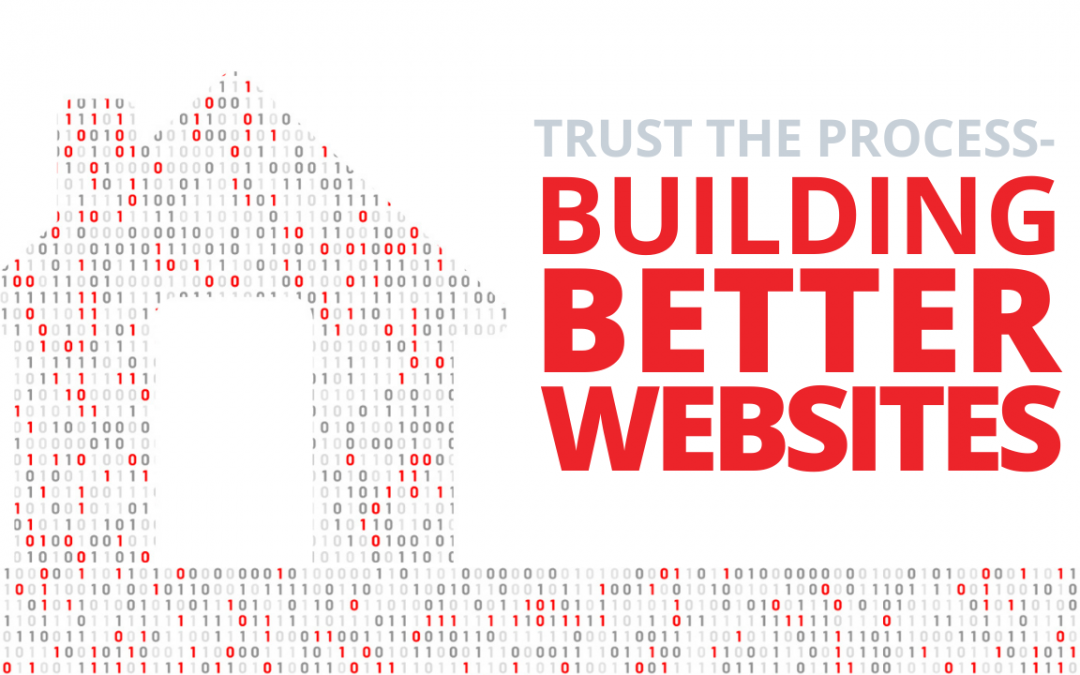Your website is where you, your organization, or your business lives on the internet. It’s the digital house you invite visitors to and you want to make sure you make a good first impression and craft an experience that inspires them to stay awhile. You not only want to have curb appeal, but when people walk inside, the layout has to make sense, it has to be accessible to all and make them feel at home.
We often talk about the end goal, but what’s often left out is the process around achieving it. How exactly do you ensure a smooth experience for both yourself and your developers? Let’s talk about the core components of web design and how you use them to get there.
You want to have both quality materials and quality craftsmanship so you can build something that is going to last awhile and fit your needs.
Here are some of the things to keep in mind:
A Blueprint (Sitemap)
It’s said that those who fail to plan, plan to fail. When you’re first building your digital home, it’s important to have some kind of vision and go in equipped with at least a 10,000 foot view. You want to have a sitemap that lists out the pages you want, an overall idea of what you want your visitors to do / where you want them to go, and the main point you want to get across. This helps set expectations for both yourself and the team you’ll be working with, and lets you both know what target you’re trying to hit. If you go in unprepared, then you risk getting stuck in an endless cycle where you’re never quite sure when you’re done which leads to the dreaded “scope creep” and delays you from going live.
Quality Assets
Sometimes the difference between looking like a professional or an amaetur are all in the visuals. Getting quality images, whether they be genuine or stock photography can change the entire feel of a website. Invest in getting some professional headshots done, hiring a good photographer or at the very least snapping some well lit pics with your smartphone might do the trick. Investing in a subscription stock media service like ShutterStock, FreePik or iStock is also a great idea in lieu of professional photography. The visual assets you’ll need to illustrate and populate your website don’t just stop at photography either, you should secure infographics and illustrations that support your website’s content to help develop the aesthetic of your site.
Meeting Time and Milestones
It’s important to set up time all throughout to make sure you and your dev team touch base. From initial concepts all the way through to defining your launch window. Communication is key and the more times you get to “touch” one another during the process, the more you get to ensure you’re going down the right path. The biggest thing you want to avoid is going too deep down the rabbit hole and then having to burn time getting back in sync.
Content: It’s King
I’m sure you’ve heard the phrase before and it is true for so many reasons. The earlier you have this in the process, the better it will be for everyone. If you have an existing site that you’re revamping, your dev team can transfer the content either manually or programmatically. If you’re starting fresh, it’s helpful to have content laid out in Word, Google Docs, or some kind of electronic document. If you have content ready before a single line of code is written, this will give your team the ability to build your layouts AROUND your content. It’s much more effective to communicate concepts to your audience if the layout is built around the information you’re trying to deliver rather than it being shoehorned into the layout later on. This is ultimately the reason why a custom crafted page ends up being more effective than an off the shelf template, because the experience is purpose built, from the ground up.
Appropriate Hosting Plan
Once you have everything up and ready to go, you’ll want to make sure you’re launching on the best plan for the type of site you are pushing to the public. With web hosting, very often you get what you pay for and the cheapest option will probably get you live but give your audience a less than stellar experience with load times. Ideally you want to get something that has all the extras like automated backups, your SSL certificate, and caching included. Be sure to shop around and make sure you’re getting a plan that is fitting for the platform you’re using. Having the right amount of horsepower to effectively run your site is paramount.
With all these pieces and processes in hand, you should be in good shape to ensure a great experience for you as the stakeholder and the team or individual you’re working with to bring your dream into reality, even if that person is ultimately you!

